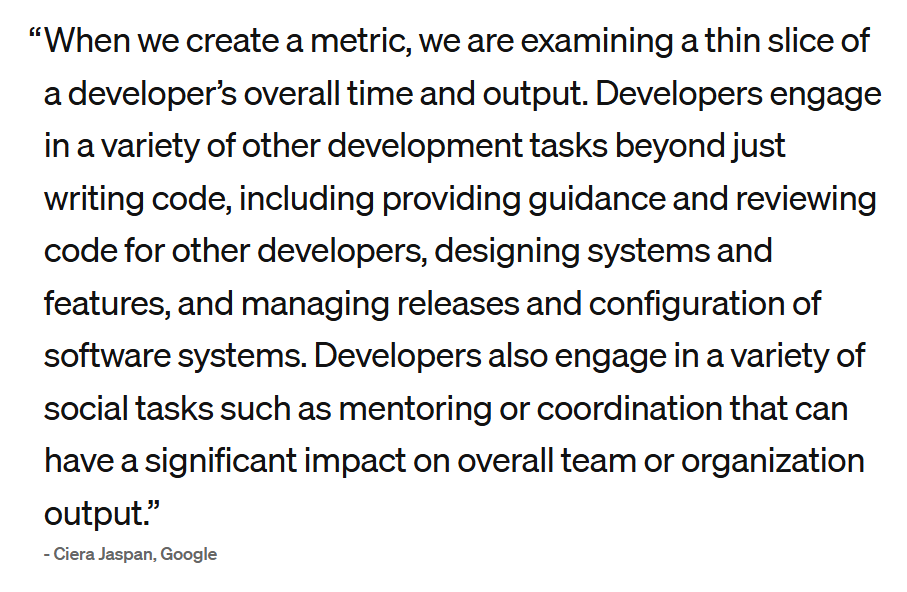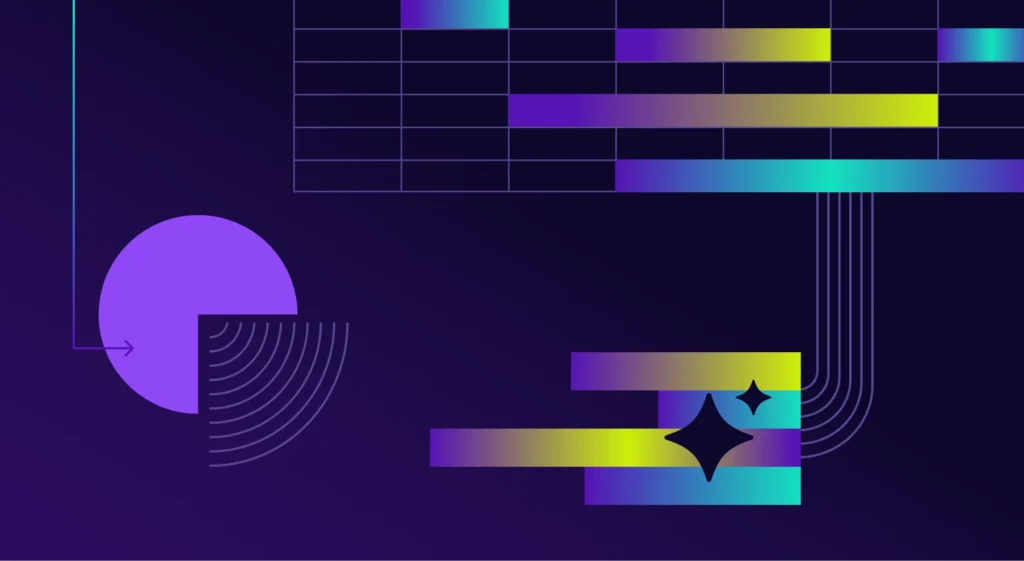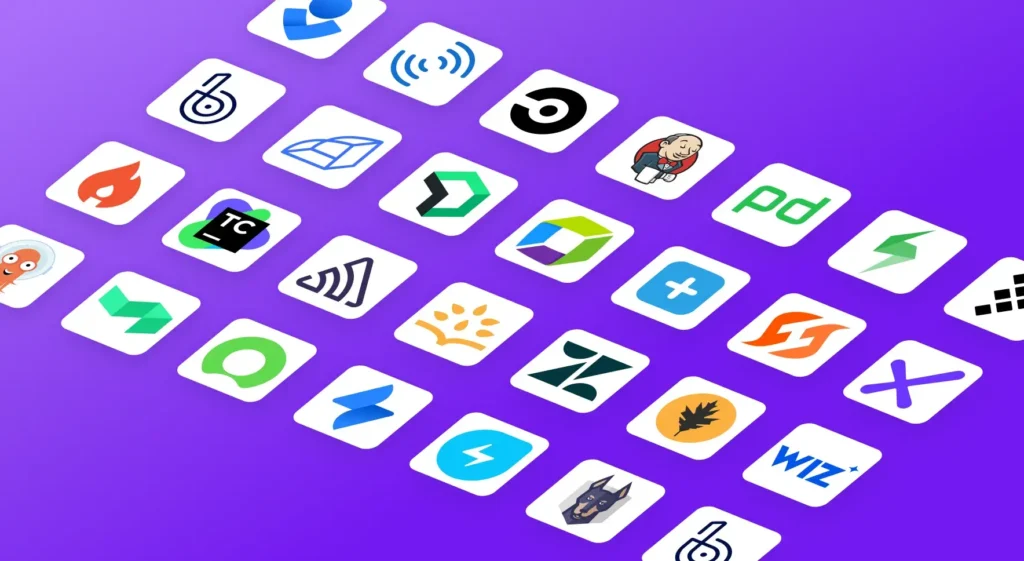In this article
You can’t escape artificial intelligence talk in software development anymore. X is flooded with developers posting about building apps in minutes and startups bragging about slashing their development costs.
Not everyone’s convinced, though. Some developers think that AI is overhyped at best, and actively harmful at worst.

(Source)
Many teams start using AI assistants thinking they’ll instantly write perfect code, then get stuck crafting better prompts or debugging functions that crash in production.
Without any real system in place, the whole thing becomes a headache pretty quickly. But while some developers struggle, others see fantastic results.
For example, Jellyfish’s State of Engineering Management report found that AI coding brought a 25% increase in developer velocity and productivity. The difference is that successful development teams know when to use AI and how to fit it into their workflow.
We’ll show you how to build AI into your development workflow the right way, not the haphazard approach that gives AI tools a bad reputation.
Measuring Developer Productivity in the AI Era
Measuring Developer Productivity in the AI Era
Measuring developer productivity was hard enough before AI came along.
Now that AI tools are changing how developers work, you need new approaches to understand what’s happening:
Why Old Metrics Fail
Many companies still track developer productivity like manufacturing work. They count the lines of code, log the hours, and measure the commits. It feels scientific and measurable. But it’s also completely wrong, and it can lead to burnout.
Google researchers have been studying this problem, and their findings are pretty blunt about traditional approaches:

(Source)
Measuring code output like manual labor misses the point entirely. Development work involves code reviews, mentoring teammates, and solving complex problems. None of that shows up in line counts.
Another Google study drives this home further:

With AI tools in the mix, old engineering KPIs become even more misleading. AI can help developers write more code faster, but that doesn’t mean better outcomes.
For example, a developer using AI might triple their line output, but solve fewer meaningful problems.
Modern Frameworks and Metrics
Google, Microsoft, and other tech giants kept getting burned by line-of-code metrics and hour tracking. So, they developed new frameworks.
These two have become widely adopted:
- DORA metrics measure delivery performance instead of individual output. They track deployment frequency, lead time for changes, change failure rate, and time to restore service. These metrics show you how well your team ships reliable software and recovers from problems when they happen.
- SPACE framework looks at five dimensions — Satisfaction, Performance, Activity, Communication, and E The framework recognizes that productive developers collaborate well, feel good about their work, and contribute to more than just writing code. SPACE explicitly warns against tracking only activity-based measures.
Even developers on Reddit (who are usually skeptical of productivity tracking) acknowledge that DORA makes sense:

(Source)
These approaches have their limitations, but they beat counting lines of code by miles. They treat software development as the complex, collaborative work that needs multiple perspectives to understand properly.
PRO TIP 💡: Jellyfish seamlessly tracks your DORA metrics by connecting with your existing Git, CI/CD, and incident management tools. No workflow changes needed. You get automatic insights into deployment frequency, lead time, change failure rate, and mean time to recovery.
Balancing Metrics with Qualitative Feedback
Numbers tell only half the story. The best team leaders combine metrics with regular conversations about how work actually feels.
Simple qualitative checks that work include:
- Developer surveys outline job satisfaction, tooling frustrations, and process issues that never appear in software engineering metrics
- Regular one-on-ones show why metrics changed and what’s really blocking progress
- Team retrospectives expose workflow problems and collaboration issues behind the numbers
- Peer feedback sessions show how well people work together and share knowledge
- Exit interviews find systemic problems that drive good developers away
When metrics flag a problem, qualitative feedback shows you what went wrong. A developer who mentions broken deployment scripts in a survey gives you more direction than any chart.
How Generative AI Enhances Developer Productivity: Key Use Cases and Benefits
How Generative AI Enhances Developer Productivity: Key Use Cases and Benefits
AI tools are already helping millions of developers work faster, but they’re not miracle solutions that fix everything.
Here’s where AI actually makes a real difference and where it falls short:
Automating Repetitive and Manual Tasks
What developers waste time on: Developers spend hours every week on boring, repetitive work that doesn’t require much thinking. They write boilerplate code for new components, create basic unit tests that follow the same patterns, and generate documentation that mostly restates what the code already says.
How AI handles it: AI tools are especially useful for routine tasks. GitHub Copilot can write standard functions from simple comments, while AI documentation tools can generate basic API docs and code snippets. The AI takes care of the setup work so developers can spend time on harder problems.
The impact on daily workflow is exactly what you’d expect, as this developer explains:

(Source)
Common mistakes to avoid ⚠️: Don’t copy-paste AI-generated code without checking it first. AI can miss edge cases or use outdated approaches. The biggest mistake is treating AI like it’s perfect and never needs human review or tweaking.
Code Generation and Improvement
What developers waste time on: Developers often get stuck writing similar functions repeatedly, or they spend ages trying to optimize code that works but runs slowly. They also waste time debugging syntax errors and refactoring messy legacy code.
How AI handles it: Tools like ChatGPT and Claude can write functions and even translate code between programming languages. AI can also spot potential bugs and help refactor code to be more readable.
Common mistakes to avoid ⚠️: Don’t assume AI-generated code is production-ready without testing it thoroughly. Also, avoid letting AI make architectural decisions or handle security-critical code without expert review.
This developer on Reddit summed it up perfectly and shared some useful insights:

(Source)
PRO TIP 💡: Jellyfish’s AI Impact platform measures exactly how tools like GitHub Copilot, Cursor, and Gemini affect your team’s actual productivity. Get granular adoption data and benchmark AI users against non-AI users to see which teams excel with different tools.
Accelerating Testing and Debugging
What developers waste time on: Writing test cases for every function gets tedious fast, especially when you’re covering basic happy path scenarios. Debugging can also eat up entire afternoons when you’re staring at cryptic error messages.
How AI handles it: AI tools can generate test suites from your existing code and suggest edge cases you might not have considered. When bugs appear, AI can analyze stack traces, outline potential root causes, and recommend specific fixes based on the error patterns.
Common mistakes to avoid ⚠️: Don’t rely on AI for debugging complex system interactions or issues that demand deep knowledge of your application’s specific behavior.
Enhancing Knowledge and Collaboration
What developers waste time on: Team members constantly interrupt each other with questions about unfamiliar codebases, legacy systems, or tools they’ve never used before.
How AI handles it: AI can quickly explain complex code and help write clear documentation that makes sense to newcomers. It can also help developers understand unfamiliar libraries without having to dig through documentation or ask teammates for help. This is especially valuable for junior developers — 71% of new coders say AI speeds up their learning.
Common mistakes to avoid ⚠️: AI explanations sound convincing but might miss important context about why your team made specific architectural choices. Don’t use AI to replace actual team discussions about important technical decisions.
Improving the Developer Experience
What developers waste time on: Developers are frustrated with slow build times and confusing error messages that don’t help them fix problems. They also lose momentum constantly switching between tools and hunting through configuration files when something breaks.
How AI handles it: Having AI means never googling “how to sort an array in JavaScript” again. Smart IDEs with AI can predict what you’re trying to do and autocomplete complex configurations based on your coding patterns. Plus, developers who use AI tools are more than twice as likely to feel happy and fulfilled at work.
Common mistakes to avoid ⚠️: AI might suggest environment changes that break your setup, so check what it wants to modify before hitting “yes.” Keep AI away from production infrastructure settings where a bad suggestion could crash your system.
Putting AI to Work: A Practical Implementation Guide
Putting AI to Work: A Practical Implementation Guide
You can’t just hand out AI tools to your team and hope for the best. The teams that see real results follow a systematic approach that starts with small wins and builds from there.
| Step | Action | Key tasks | Timeline |
| Establish your baseline | Measure current developer productivity and define pain points | • Collect DORA metrics for your team • Survey developers on major time wasters • Document current workflows and issues |
2-3 weeks |
| Launch a pilot program | Start small with a few willing developers and simple use cases | • Choose 3-5 volunteer developers • Select 2-3 AI tools to test • Define success criteria |
4-6 weeks |
| Create a training plan | Develop structured learning for AI tool usage | • Create prompting rules and best practices • Set up peer mentoring system • Schedule regular skill-sharing sessions |
2-4 weeks |
| Develop a risk framework | Set up guardrails for safe AI adoption | • Define code review standards for AI-generated code • Create security guidelines for AI tool usage • Set up monitoring for quality and compliance |
1-2 weeks |
| Measure and reinvest | Track results and scale successful approaches | • Compare post-implementation metrics to baseline • Get qualitative feedback from developers • Plan rollout to additional teams based on learnings |
Ongoing |
This roadmap gives you the framework, but the real work happens in the details. Let’s break down what each step actually looks like and how to execute it effectively:
Know What to Expect
Before rolling out AI tools, set realistic expectations with your team. AI won’t turn junior developers into seniors overnight, and it won’t fix broken development processes.

(Source)
This developer gets it. The first month will be messy regardless. Developers may write worse prompts than code.
Some will try to generate entire applications and get frustrated when it fails. This is normal and most teams go through the same learning curve.
Here’s what typically happens in the first few months:
- Weeks 1-2: Excitement mixed with frustration as people learn how to prompt properly
- Weeks 3-6: Some developers start seeing real-time savings on routine tasks
- Weeks 7-12: Teams develop workflows that consistently streamline productivity
The key is to manage expectations upfront. Tell your team this is an experiment, not a silver bullet.
Don’t Boil the Ocean: Start Small
The temptation is to roll out AI tools to your entire engineering team at once. Don’t do it. You’ll overwhelm people and probably turn half your developers against AI before they’ve had a chance to see what it can do.
Start with a small group of volunteers — maybe 3 to 5 developers who are curious about new tools. Pick people who aren’t afraid to experiment and can handle some frustration while they figure things out.
Start with low-risk, high-value tasks:
- Unit test generation for existing code
- Documentation for stable APIs
- Code formatting and style improvements
- Simple bug fixes in well-understood modules
Your pilot team becomes your champions. They’ll figure out which prompts work and which tools deliver value. More importantly, they’ll share real success stories that convince skeptics better than any mandate could.
PRO TIP 💡: Use Jellyfish to track your pilot program’s success with concrete data. Compare productivity metrics between your AI pilot team and non-AI users to build a compelling business case for broader rollout.
Train Your Team (and Yourself)
Good prompting is a skill, and like any skill, it gets better with practice and guidance.
Don’t assume people will figure it out on their own. Set up regular training sessions where your pilot team shares what they’ve learned.
- What prompts work well?
- Which tasks are AI good at versus terrible at?
- How do you know when to trust the output?
Pair senior developers with juniors to show how they use AI for complex tasks. You can even create a shared prompt library for common scenarios.
Also, remember that different developers need different support. Your senior architects might struggle with letting go of control. On the other hand, junior developers might lean too heavily on AI without understanding the code.
Understand the Limitations and Challenges
AI tools aren’t perfect, and pretending they are can get you in trouble. They can generate code that looks great, but it might come with subtle bugs that slip through the cracks.
Nearly half of professional developers think AI tools are bad at handling complex tasks, and they’re right to be cautious. AI still can’t figure out tricky business rules, complicated system connections, and tasks that need deep knowledge of your specific domain.
The main challenges your team will run into:
- AI can give different answers to the same question, so you can’t count on getting consistent results
- The tools don’t know anything about your company’s specific rules or how your systems connect
- AI often suggests code that runs fine but might have security problems you won’t notice right away
- Some developers start copying AI code without really understanding what it does or why
Of course, many of these problems aren’t unique to AI. They apply to any code that needs review. One experienced developer outlines initiatives that work well:

(Source)
Teams that acknowledge limitations early tend to have much better long-term success than those who learn about them the hard way.
PRO TIP 💡: Jellyfish shows you exactly how AI tools perform across different work types, programming languages, and team roles. You’ll see where AI excels and where you need human oversight. With this data, you can set realistic expectations and create better guardrails for AI adoption.
Create a Clear Risk Management Framework
You need to create simple guidelines that protect your code and company data without making developers jump through hoops.
Here are some general guidelines that might be useful:
- All AI-generated code gets reviewed by another person before it goes into production
- Don’t put customer data, secret algorithms, or sensitive company info into AI tools
- Mark AI code in comments so future developers know what they’re dealing with
- Test AI code just as thoroughly as you’d test anything else
Teams that treat AI output with appropriate skepticism catch problems early. Those who assume AI-generated code is safe by default learn expensive lessons about hidden bugs and compliance violations.
Plan for Future Skill Shifts
The way developers work is changing, but not as dramatically as headlines suggest. Yes, AI handles more boilerplate code now. But someone still needs to know what to build and how systems fit together.
Jellyfish’s study found that at least 25% of the work humans do today will be handled by AI within five years. That’s a major shift, but it means AI takes over the routine tasks that developers often find tedious anyway.
What actually changes day-to-day:
- Less time memorizing syntax –> more time reviewing code
- Fewer hours on repetitive tasks –> more on tricky bugs
- Less googling basic things –> more validating AI output
Your senior developers won’t suddenly become obsolete. They’ll spend more time mentoring and catching the subtle issues AI misses.
Junior developers might seem more productive initially, but they’ll still need to learn why things work, not just how to prompt for solutions.
Key AI Tools for Developer Productivity
Key AI Tools for Developer Productivity
With hundreds of AI tools flooding the market, choosing the right ones for your team can feel overwhelming.
Here’s a breakdown of the main categories and the tools that developers actually find useful in their daily work:
General-Purpose LLM Chatbots
General-purpose LLM chatbots are AI assistants that weren’t built specifically for developers but turn out to be excellent coding partners.
You chat with them through web interfaces, ask questions in plain English, and get detailed responses that can include code explanations or debugging help.
Popular examples include:
- ChatGPT (OpenAI): The tool that introduced millions of developers to AI coding help. It’s particularly useful for code explanations, debug assistance, and to turn plain English requests into working functions.
- Claude (Anthropic): Developers praise Claude for its thorough explanations and cleaner code output. It’s especially good at understanding project context and maintaining consistency across long coding sessions.
- Gemini (Google): Strong integration with Google’s ecosystem and performs well on most coding tasks. The tool is a strong fit for AI developers already working within Google’s development environment.
Choosing between these tools often comes down to your real-world use case and workflow. Here’s how one Reddit user sees the tradeoffs:

(Source)
AI Coding Assistants
AI coding assistants integrate directly into your development environment and make context-aware code suggestions as you type. Most popular options are:
- GitHub Copilot: The most widely adopted coding assistant that works across dozens of programming languages. It suggests entire functions, helps complete code blocks, and can even generate tests based on your existing code. 42% of developers say that GitHub Copilot is the tool of choice.
- Tabnine: Focuses on privacy with options for local deployment and custom model training on your codebase. It’s popular among enterprises that can’t send code to external servers.
- Cursor: A full IDE built around AI assistance from the ground up. Developers love its chat interface that understands your entire codebase context without copy-pasting. The ability to edit multiple files simultaneously makes large refactoring tasks much faster.
- Amazon CodeWhisperer: Amazon’s free alternative that excels at AWS-related code and infrastructure. It includes built-in security scanning that outlines vulnerabilities as you type. Particularly strong for teams already deep in the AWS ecosystem.
- Codeium: Provides a free alternative that works well for individual developers and small teams. It supports over 70 programming languages and integrates with popular IDEs like VS Code and JetBrains.
- Replit AI: It’s built into Replit’s online IDE, so it’s accessible without any setup. Great for learning and prototyping since you can start coding immediately. The contextual awareness works surprisingly well for an in-browser tool.
Writing and Documentation Tools
Writing and documentation tools use AI to improve all the written communication around your development work. They help with everything from API docs and README files to commit messages and code comments.
Examples include:
- Mintlify: Scans your codebase and creates searchable documentation sites automatically. It pulls from code comments and function signatures to build accurate API references.
- GitLab Duo: Offers AI-powered assistance specifically for code-related writing tasks like commit messages and code reviews. It understands the context of your changes and can recommend clear descriptions that help your team understand what happened and why.
- Grammarly for Developers: It learns your team’s terminology and catches jargon that confuses new developers. It’s especially helpful for teams with international members or anyone who struggles to write clear technical explanations.
Code Quality and Security Tools
Code quality tools use AI to find problems in your code that slip past regular code reviews. They look for security vulnerabilities, performance bottlenecks, and code patterns that might create headaches later.
Examples include:
- Snyk Code: Uses machine learning to find security gaps in your code and dependencies, then outlines specific fixes. It understands the context around vulnerabilities, so you get fewer false positives than traditional scanners.
- SonarQube: Scans your codebase with AI to find quality issues and bugs that human reviewers might miss. It points out messy code that needs clean-up and shows you how your code quality changes over time.
The Future of Developer Productivity with AI
The Future of Developer Productivity with AI
While current tools already help millions of developers write better code faster, we’re still in the early stages of what’s possible.
Yes, sometimes AI suggestions need heavy edits. And sometimes you waste time trying different prompts. But we’re watching these tools get better every month.
The progress is already impressive. 81% of developers report real productivity gains from AI. And that’s with today’s limited tools.
More importantly, 87% of them say it saves mental energy for work that matters. They can architect new systems instead of writing the same CRUD operations for the hundredth time.
What’s coming next will likely accelerate this trend. AI tools will be able to grasp entire codebases and move past single-file assistance. They’ll also help architect features across multiple services, not just write individual functions.
We’ll also see AI agents that can handle multi-step tasks on their own, from writing code to running tests to fixing bugs. Multimodal AI will understand your documentation and requirements together, not as separate pieces.
McKinsey says developers could save three hours daily by 2030. No more hunting for unclosed brackets or writing the same API validation code. That’s time to refactor the messy legacy module or build the feature that’s been stuck in the backlog.
All these improvements sound great, and they are. But they work best when you have developers who know how to use them properly. As one programmer explains:

(Source)
This is encouraging news for developers. The developers who learn to work with AI effectively will be the ones who really benefit.
Measure Your AI Transformation with Jellyfish
Measure Your AI Transformation with Jellyfish
Jellyfish is a software engineering intelligence platform that plugs into your existing development tools and shows you exactly how AI tools affect your team’s productivity and delivery performance.
No more wondering if those expensive AI subscriptions are worth it. With our AI Impact product, you see exactly what’s working and what isn’t.
Here’s how Jellyfish helps you make the most of your AI investment:
Track adoption across GitHub Copilot, Cursor, and Gemini Code Assist: Get granular adoption data and benchmark AI users against non-AI users to see which teams excel with different tools.
Measure real productivity gains from AI: Get concrete data on whether GitHub Copilot, Cursor, or other AI tools actually speed up your development cycles, reduce code review times, or improve delivery metrics.
Outline AI success patterns: Find out which teams get the most value from AI tools and replicate their approaches across your organization.
Get DORA metrics that include AI impact: Track how AI affects your deployment frequency, lead time, pull requests, change failure rate, and recovery time without any manual reporting.
Prove ROI to leadership: Replace “we think AI is helping” conversations with concrete data showing exactly how your AI investments translate to faster delivery and better outcomes.
Match AI tools to specific roles and workflows: Get data-driven insights into which AI coding tools work best for different development phases, team roles, and project types.
Stop debating AI ROI in meetings and start measuring it with real numbers. Schedule an AI Impact demo to see how Jellyfish tracks what matters.
FAQs
FAQs
How do I justify the cost of investing in AI tools to my leadership?
Start with pilot data from a small group of developers and measure concrete outcomes like faster code completion or reduced code review times.
Present the cost per developer per month against time savings — most AI tools pay for themselves if they save even 30 minutes per developer daily.
What is the single most important first step to take when introducing generative AI tools?
Pick 3-5 willing developers who aren’t afraid to experiment with GenAi and give them access to one or two tools for specific tasks like writing tests or generating boilerplate code.
Set clear expectations that this is an experiment to learn what works, not a mandate to use AI for everything. Let them figure out what’s helpful and share those lessons with the rest of the team.
Will AI tools affect my junior and senior developers differently?
Yes. Junior developers typically see bigger productivity gains because AI helps them learn syntax, avoid common mistakes, and understand patterns faster.
Senior developers benefit less from code generation but use AI for routine tasks, documentation, and explaining complex legacy code.
How do we choose between a general-purpose tool like GitHub Copilot and building a custom AI model?
Start with general-purpose tools like GitHub Copilot or Claude. They work well for 80% of coding tasks and require no setup time.
Only consider custom models if you have highly specialized domain needs that general tools can’t handle, plus the budget and expertise to train and maintain them.
How do I ensure AI doesn’t compromise our code quality or security standards?
Treat AI-generated code like code from a fast junior developer — always review it before merging and test it thoroughly.
Set up clear rules about not putting sensitive data or proprietary code into public AI tools, and make human oversight mandatory for security-critical components.
Learn More About Developer Productivity
Learn More About Developer Productivity
- What is Developer Productivity & How to Measure it the Right Way
- What is Developer Productivity Engineering (DPE)?
- 9 Common Pain Points That Kill Developer Productivity
- How to Improve Developer Productivity: 16 Actionable Tips for Engineering Leaders
- Automation in Software Development: The Engineering Leader’s Playbook
- 29 Best Developer Productivity Tools to Try Right Now
- 21 Developer Productivity Metrics Team Leaders Should Be Tracking
- How to Build a Developer Productivity Dashboard: Metrics, Examples & Best Practices
- Developer Burnout: Causes, Warning Signs, and Ways to Prevent It
- 10 Peer Code Review Best Practices That Turn Good Developers Into Great Ones
- Mitigating Context Switching in Software Development
About the author

Lauren is Senior Product Marketing Director at Jellyfish where she works closely with the product team to bring software engineering intelligence solutions to market. Prior to Jellyfish, Lauren served as Director of Product Marketing at Pluralsight.




